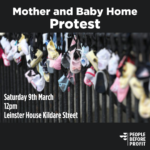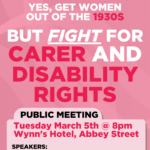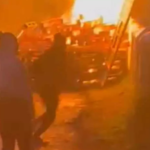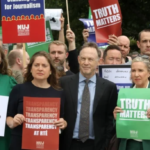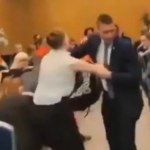The Fianna Fail- Fine Gael coalition deal will shape politics well into the future.
The two conservative parties grew out of a civil war fought in 1922-23 in which about 5,000 people lost their lives. Great bitterness was caused by the fact that Cumain na nGaedheal government– the predecessor of Fine Gael – executed more republicans than the British had done during the war of independence.
Yet within a few decades there was little difference between them. The former Fianna Fail leader, Sean Lemass used to say, “The difference is that we’re in – and they’re out.”
He had a point. For 63 of the last 98 years, Fianna Fail led the government and, until 1989, refused to enter coalition with any other party. Fine Gael led the opposition and, on a few occasions, got to create an ‘Anybody but Fianna Fail’ government.
It was an ideal political arrangement for the privileged. They could never be threatened as both the government and the opposition were in the hands of their political representatives. Whenever tension grew in society, they had a ‘spare wheel’ party that would promise change. When that occurred, the bizarre alliance of Fine Gael and Labour inevitably caused disillusionment, leading to a general fatalism. It was a political culture that the wealthy could only dream off elsewhere.
But it has broken down. The real surprise is that even when Fine Gael and Fianna Fail coalesce, they still cannot get a majority in the Dail.
This is because most people want them out of office – so they have been forced to cling together. They know that the Covid-19 crisis will be followed by a global economic recession and a FF-FG coalition will make working people pay.
When Martin and Varadkar talk about a ‘stable government’, they mean a government with a strong enough parliamentary majority to stick in office long enough to ride out a wave of public anger.
To get such a government, they will lie. One of the negotiators for the coalition deal told the Irish Times that their programme for government will be “more left-wing than the Sinn Féin manifesto”.
The aim is to inveigle the Greens, the Social Democrats or Labour into joining. Eamonn Ryan, would love to but has difficulty convincing Green Party members. The Social Democrats are tempted. Hence the sweet words from FF and FG.
But of any of these parties fall for this manoeuvre, they will be punished with electoral annihilation.
People Before Profit have not been approached to join – and for good reason. We stood in the election under the slogan of ‘Break the Cycle’ and said we would never go near them.
Sinn Fein did not rule out coalition but FF and FG still want to exclude them because they don’t think they are, as yet, trustworthy enough.
The re-organisation of right-wing politics augurs well for the Irish left. In the past, Fianna Fail dominated the working class vote with a vague notion that they represented an alternative to the Blueshirts and snobs of Fine Gael. They garnered 40% of the votes of skilled and unskilled workers and even to this day still command pockets of working class support.
The alliance with Fine Gael will cause internal tensions but more importantly it will accelerate their decline.
Irish politics will move to a more classic left-right divide but with a distinctive Irish flavour. Sinn Fein will pose as champions of workers and use a left rhetoric – even as they implement more right-wing politics in the North, such as cutting taxes on big business. Many of their supporters, however, want a harder left – which is why, even at this stage, the majority of their second preference votes went to People Before Profit.
The project to build a serious radical left is taking off and its outcome will be determined by those who put up the best fight against the FF-FG coalition.


